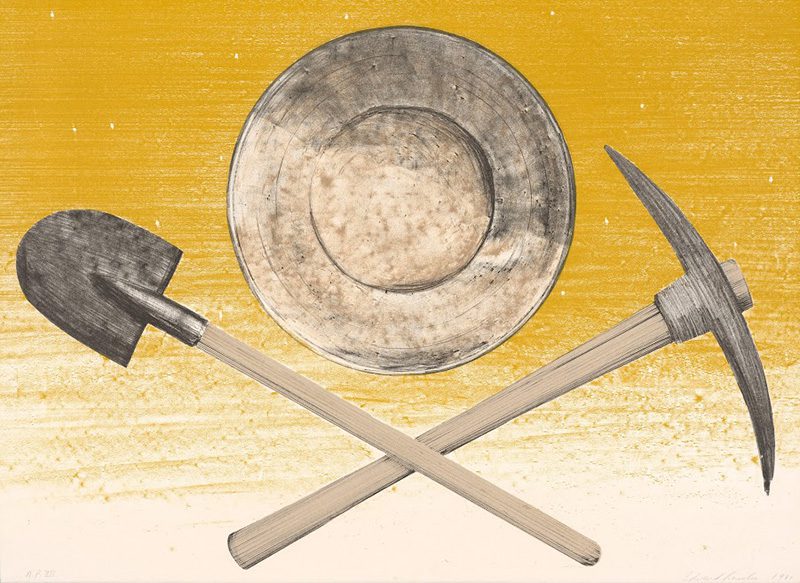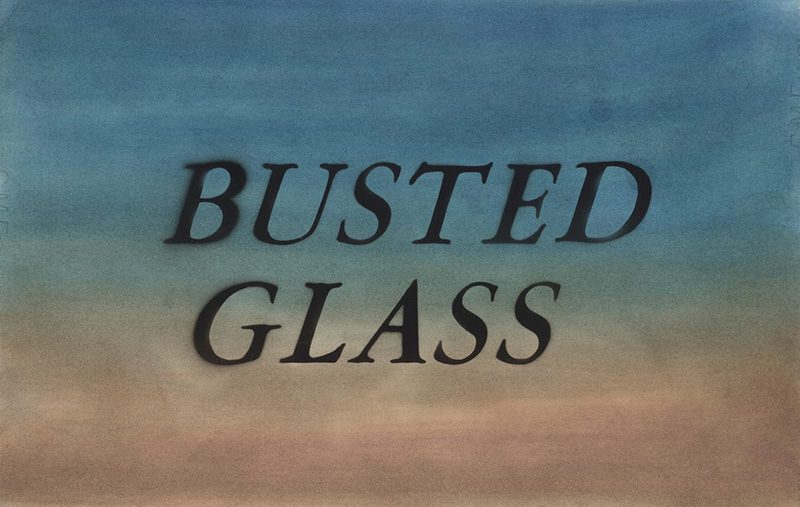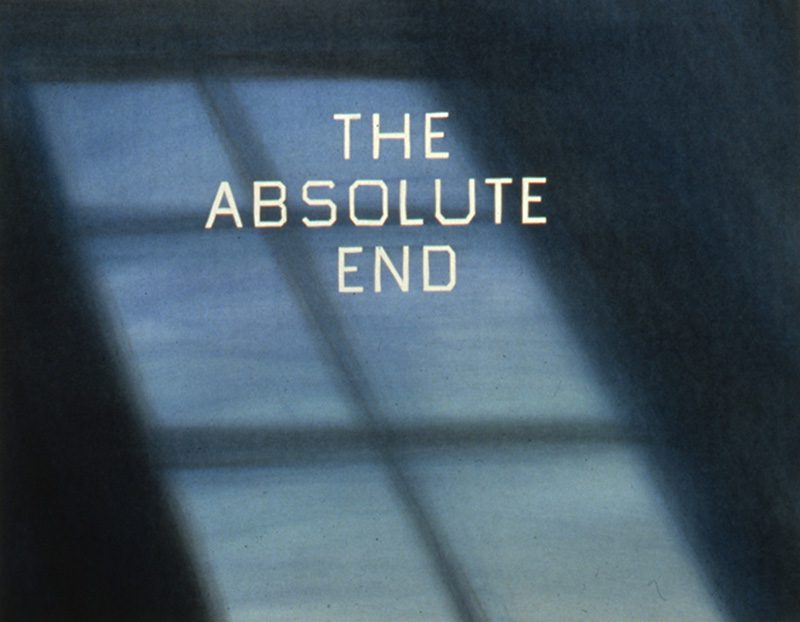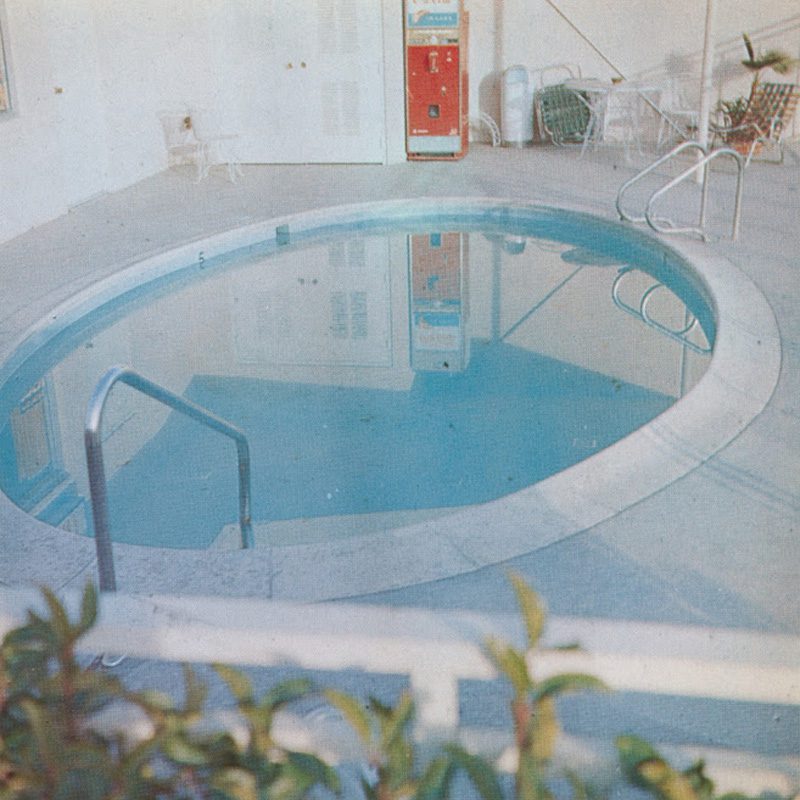ART-PRESENTATION:Ed Ruscha and the Great American West
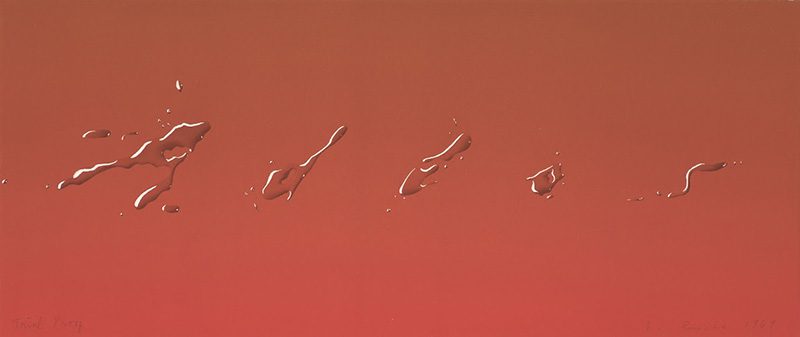 Ed Ruscha developed a vibrant signature style of combining words, images, objects, and landscapes, that associated him first with Pop art in the ‘60s and then with Conceptual Art in the ‘70s. Trained as a commercial illustrator, Ruscha had an early interest in comic books, graphic design, typography, and serial imagery that led him to produce a now landmark series of inexpensive, large-edition artist’s books comprising black-and-white photographic essays on commonplace architecture and objects.
Ed Ruscha developed a vibrant signature style of combining words, images, objects, and landscapes, that associated him first with Pop art in the ‘60s and then with Conceptual Art in the ‘70s. Trained as a commercial illustrator, Ruscha had an early interest in comic books, graphic design, typography, and serial imagery that led him to produce a now landmark series of inexpensive, large-edition artist’s books comprising black-and-white photographic essays on commonplace architecture and objects.
By Efi Michalarou
Photo: de Young Museum Archive
The allure of the Western frontier has been a central part of Ed Ruscha’s biography and mythology ever since he drove from Oklahoma City to Los Angeles in 1956. His trip roughly followed the Route 66 through the Southwest, which featured many of the sights, auto repair shops, billboards, and long stretches of roadway punctuated by oil wells and telephone poles, that would provide him with artistic subjects for decades to come. The exhibition “Ed Ruscha and the Great American West”, explores Ed Ruscha’s engagement with the American West and its starring role in the American mythology. Nine sections with 99 works reveal Ruscha’s fascination with the evolving landscape and iconic character of the “Great American West” in symbolic, evocative, and ironic renditions. These include works that depict the region as it is experienced through the windshield of a car and others that display Ruscha’s interest in built environments such as tacky buildings like those along the Sunset Strip, or the endless asphalt of urban sprawls. The gasoline station has long been an important element of Ruscha’s work, and a photograph taken in 1962, “Standard Station, Amarillo, Texas”, became the basis for several of his best-known paintings and prints. Between 1963 and 1978 Ruscha systematically photographed southern California’s built environments, which he made into wordless books, such as “Every Building on the Sunset Strip”. The 16 artist’s books he created in this manner were widely influential among a younger generation of artists. During this period Ruscha also made two short films, “Premium” (1969–70) and “Miracle”. Ruscha is famous for making a word or phrase the sole subject of an artwork, often depicting the same word in a variety of forms such as poured liquids, cut ribbons, spray paint, or a favorite typeface that the artist calls “Boy Scout utility modern”. The exhibition concludes with works that include the words “The End”. Ruscha continues to work and the exhibition includes prints made as recently as 2014. He maintains a studio in the California desert, and makes regular road trips though the spare, evocative,
Info: The Fine Arts Museums of San Francisco, de Young Museum, Golden Gate Park, 50 Hagiwara Tea Garden Drive, San Francisco, Duration: 16/7-9/10/16, Days & Hours: Tue-Sun, 9:30-17:15, http://deyoung.famsf.org

